No it's not what you think! We have not got into the Port! But it is cold enought to! We have been visiting Port Fairy and Portland. We ended up staying an extra day in Apollo Bay, as Tuesday was wet and horrible and we saw no sense in heading off on the last part of the Great Ocean Road, in the rain. It turned out to be a very wise decision. The area has had in excess of 25 mls and when we did arrive at Port Fairy yesterday we were told "They had had hail stones the size of golf balls the night before".Peter and I spent Tuesday planning a visit back to Geraldton. We always planned to go home for a couple of weeks and thought it would be from Adelaide. As we have been a bit longer getting around the coast, than we initially thought it would take us, we had decided to go up through the middle before it gets too cold. Possibly fly home from Darwin. That was looking like being the beginning of June and I had suggested we go home for Peter's 65th birthday. Then on Monday night the 'Minister for Transport' dropped the suggestion that we go home from Adelaide.
I have to confess I really didn't warm to the idea initially and needed to sleep on it! Peter had found a 'Red Hot Qantas Deal'! We would fly from Adelaide to Geraldton in the one day and he had found somewhere to store the van and car in Adelaide. Peter believes we will enjoy the rest of our holiday more, if we have a visit back home soon, to catch up with the family. He is probably right. I suspect he also wants to have a look at the farm after 65 mls of rain! Once we sat down and worked out dates and where we will travel over the next few weeks, I'm sure it is the best plan. So we are going home for 3 weeks on the 19th May and back on the 9th June, to start our next adventure. Looking forward to some Issy cuddles and catching up with family and friends.Wednesday was a much nicer day and when we set off the sun was shining. There was not much traffic on the GOR, so we had a good trip to the '12 Apostles'. Kevin started the generator for that morning coffee which today was in the carpark, Val turned out four of her special cups and my freshly baked Date and Bran muffins, hit the spot.
Vivienne's muffin recipe is a great caravan recipe. Making the mixture the night before and then popping them in the tins in the morning, certainly helps when it is 'moving on day' and the freezer is empty! We enjoyed a chat with a young couple from Queensland who had parked next to our van. They have sold up and are on the road for 4 years with their young son. They have no idea where they will end up deciding to settle when the little fella gets to school age. We haven't seen anyone catch a fish yet, but this chap showed us photos of salmon they had caught from the beach, 100 metres from the free camp spot, they had just come from. So we've made a note of that camp spot on Wiki Camps. The 12 Apostles were as good from ground level as they had been from the air and there wasn't many people around either. We have been told that in peak season you would have thought you'd arrived in Japan, India or China when you pull up in the 12 Apostles carpark. After another lot of photos we travelled on and visited the rest of the tourist attractions on this remarkable piece of the Australian coastline.
The Arch, London Bridge, The Grotto and Bay of Isles. We also checked out the really steep boat ramp. The steepest in Australia! There was a sign down the bottom that said "Vehicles are not to be left on the Beach". It would certainly have to be a lower tide and a lot calmer day than when we were there for that to be considered! Despite what we were told on Monday about where the GOR finishes, it actually finishes when you turn to go into Warrnambool. Peterborough is the last major town on the GOR and there is a little town called Nullawarre that has a sign informing travellers "It is the last town on the GOR"! Nullawarre is a little bigger than Yuna, but not much! It has been was a wonderful experience travelling this GREAT road and we can thoroughly recommend that you add it to your 'Bucket List' if you haven't already got it ticked! Peter and Kevin shook hands when they got to Port Fairy. They've safely driven the GOR. "Thank You" to you both and Wally and Clara say "Thanks" as well.
How naughty of us to not show them at least one of the sights! Clara with her Travel Angel pin has been looking after us we are sure. It was late afternoon by the time we got to Port Fairy and set up, so no more sightseeing on the last day in April. Thursday proved Port Fairy was a pretty little town and aptly named. It lies on the Moyne River and where the river flows into the ocean. Around 1828 Captain Wishart was on a sailing expedition in his cutter 'Fairy' and was caught in a storm. He found shelter for the night in a little bay. In the morning he was delighted to find that he was at the mouth of an excellent river and he named the bay in honour of his tiny ship. It is a very historical town with a population of 2,500 which can rise to 10,000 in peak periods. During the Folk Festival in March there can be over 40,000 people in the town. There are also over 50 buildings classified by Australia's National Trust in the town. There is a foot bridge to Griffiths Island where you can take a walk trail out to the Lighthouse.
Mutton Birds nest there. By mid April the adult birds have commenced their Pacific migration and by now the young have set off after the adults. We weren't there long enough to do the walk and the weather is not allowing us to do all that we would like. But you get that and have to accept it!Today we decided to go to Portland. The forcast is for rain again tomorrow and there looks like there is lots to see in Portland. We were not disappointed with our decision. We have had a great day in the first town to be settled in Victoria by the Henty brothers. Edward Henty and his brother Stephen arrived at Portland Bay in November 1834. Among the inventory of their ship the 'Thistle', were bullocks, cows and pigs. A month later the third Henty brother, Francis arrived with Victoria’s first Merino sheep. On researching a little more on the brothers I have found that they first travelled from England with their father Thomas to the Swan River in WA. After two failed summers they decided the land was too poor to farm and relocated to Van Diemen's Land where they hoped to secure a freehold.
They were too late as there was no unoccupied productive land available. The sons were impatient, so they turned their attention to the opposite coast, the virtually unknown Port Phillip district of NSW. Their father petitioned the British Government in London three times to settle in the Port Phillip district, but was rejected each time. As it was not accessible from Sydney they forbade the settling of land. So the Hentys decided to settle the Port Phillip district illegally and they are now celebrated as Victoria's first settlers. Interesting what you can find on the net!!When the port was named in 1800 by a british navigator he wrote: "The bay is the only deep sea port between Adelaide and Melbourne. It offers a sheltered anchorage against the often wild weather of Bass Strait". The port was used by whalers and sealers in the early 19th century. It has always been an important fishing port and enabled the growing of the wool industry during that era. In the 20th century Portland as a port, was revived when the Aluminium Smelter was commisioned there. The smelter has been the subject of significant controversy since then, due to the amount of power needed for the smelter. Now we are able to go looking on the internet for more info on industry or tourist attractions. The aluminium smelter created a lot of discussion in the car and we were amazed at the power lines that were coming into it. This is what I have found, thanks to the net again:
In 1984 the government signed a joint venture agreement with Alcoa to build an aluminium smelter at Portland. The State Government entered into a deal with Alcoa, which provided for subsidised electricity until 2016, at a price linked to the world price of aluminium. It is estimated that in 20 years it has cost the state more than $2 billion. The Portland smelter is believed to consume between 8 and 10 per cent of the state's electricity. Given that most of this energy is derived from brown coal in the Latrobe Valley the production of aluminium is a significant contributor to Victoria's greenhouse emissions. We were fascinated with the machines used to move and load the aluminium ingots. Some of the ingots are trucked to Geelong and Melbourne for export, but the biggest percentage is through the Port of Portland. All of the bauxite is mined in WA, refined to alumina and shipped to Portland and Point Henry in Geelong. Portland is the biggest producer and I have found that Point Henry will close at the end of this year as the operation is not profitable. This is a whole lot of info, but we were pretty stoked yesterday with what we saw and have been able to research on the net. Especially when it is mined in WA. All of this research does stimulate the brain! Export trade includes softwood and hardwood chips, logs, livestock and aluminium ingots; wood chips is the largest single category and we also fascinated with this operation. 200 trucks of wood chips a day, are unloaded at the port. On average a ship is loaded every two weeks and they load approximately 900 tonnes an hour. Normally the ships are in port for about 3 days. We did do a fun thing whilst in Portland and travelled on the 'Cable Tram' that is not really a cable tram! It was fun and a good way to rattle around the town and be told the history. The volunteers do a great job running it 7 days a week for 52 weeks of the year. The only day it doesn't run is Christmas Day. Even on Good Friday and Anzac Day it runs for a couple of hours. They commenced operation in 2002. I was amused when the conductor/commentator jumped off with his red flag to stop the traffic, for the tram to cross the road. It is planned that there will be traffic lights in the future and the tram operator will press a remote to operate the lights. We also visited the Maritime Discovery Centre that has been built in the shape of an anchor. On the way home we found some fun things to photograph. People will do anything to attract the attention of tourists like us. This time shoes and boots were on the fence and we loved the bird on the post. This was on a side road where we convinced Peter to stop. We wanted to get a photo of Victoria's first established wind farm. It has 40 turbines that were built in the Codrington area in 2001. They will need to continue to keep developing wind farms if they are going to keep that Aluminium Smelter operational!
In 1984 the government signed a joint venture agreement with Alcoa to build an aluminium smelter at Portland. The State Government entered into a deal with Alcoa, which provided for subsidised electricity until 2016, at a price linked to the world price of aluminium. It is estimated that in 20 years it has cost the state more than $2 billion. The Portland smelter is believed to consume between 8 and 10 per cent of the state's electricity. Given that most of this energy is derived from brown coal in the Latrobe Valley the production of aluminium is a significant contributor to Victoria's greenhouse emissions. We were fascinated with the machines used to move and load the aluminium ingots. Some of the ingots are trucked to Geelong and Melbourne for export, but the biggest percentage is through the Port of Portland. All of the bauxite is mined in WA, refined to alumina and shipped to Portland and Point Henry in Geelong. Portland is the biggest producer and I have found that Point Henry will close at the end of this year as the operation is not profitable. This is a whole lot of info, but we were pretty stoked yesterday with what we saw and have been able to research on the net. Especially when it is mined in WA. All of this research does stimulate the brain! Export trade includes softwood and hardwood chips, logs, livestock and aluminium ingots; wood chips is the largest single category and we also fascinated with this operation. 200 trucks of wood chips a day, are unloaded at the port. On average a ship is loaded every two weeks and they load approximately 900 tonnes an hour. Normally the ships are in port for about 3 days. We did do a fun thing whilst in Portland and travelled on the 'Cable Tram' that is not really a cable tram! It was fun and a good way to rattle around the town and be told the history. The volunteers do a great job running it 7 days a week for 52 weeks of the year. The only day it doesn't run is Christmas Day. Even on Good Friday and Anzac Day it runs for a couple of hours. They commenced operation in 2002. I was amused when the conductor/commentator jumped off with his red flag to stop the traffic, for the tram to cross the road. It is planned that there will be traffic lights in the future and the tram operator will press a remote to operate the lights. We also visited the Maritime Discovery Centre that has been built in the shape of an anchor. On the way home we found some fun things to photograph. People will do anything to attract the attention of tourists like us. This time shoes and boots were on the fence and we loved the bird on the post. This was on a side road where we convinced Peter to stop. We wanted to get a photo of Victoria's first established wind farm. It has 40 turbines that were built in the Codrington area in 2001. They will need to continue to keep developing wind farms if they are going to keep that Aluminium Smelter operational!
Phew!! If you are still reading this, then you have found all this Portland info as interesting and stimulating as we did. Whilst in the town we found a fish market and purchased some fish for dinner and some oysters. We have shared and enjoyed so many dozens of Oysters Kilpatrick, since the first delights in Ceduna four months ago. I had never sampled the delights until then! Can you believe we hadn't taken one photo either? Tonight was the night! They were just as delicious as the first ones! Cheers to NSW and Victoria. Tomorrow we are back in South Australia. 20 photos

 Port Fairy, Victoria, Australia
Port Fairy, Victoria, Australia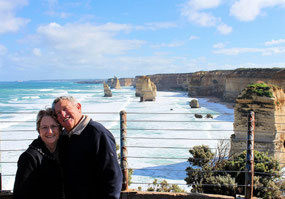
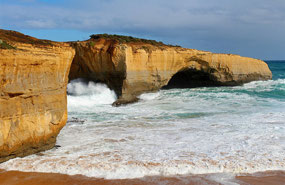
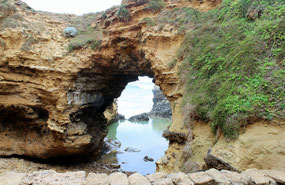
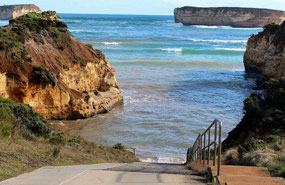
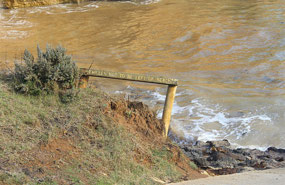
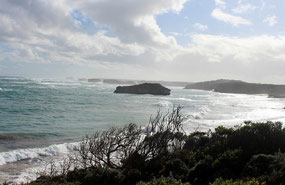
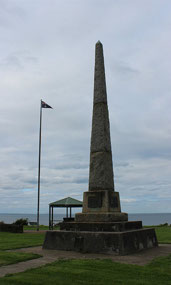
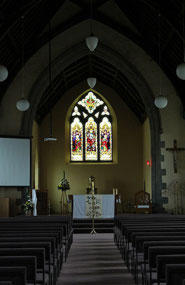
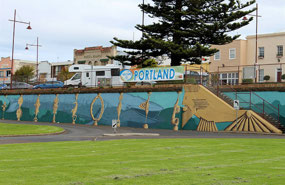

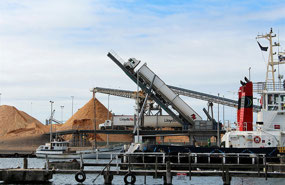
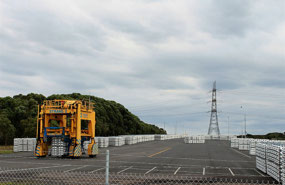
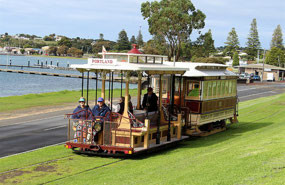
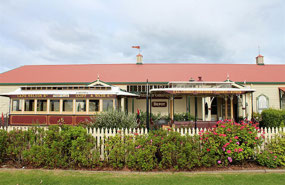
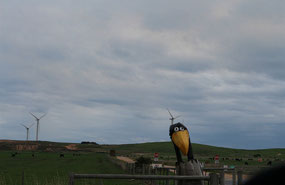
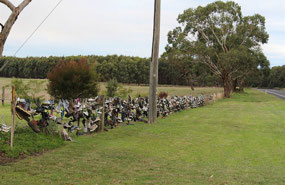
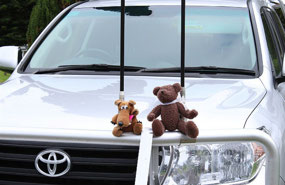

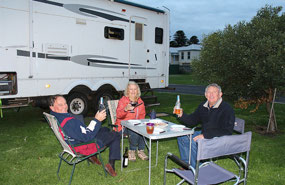
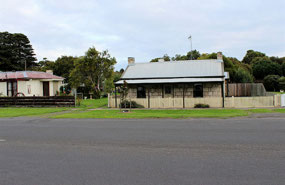
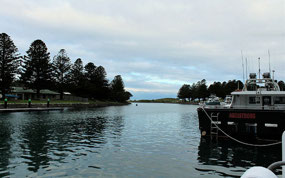
2025-05-22